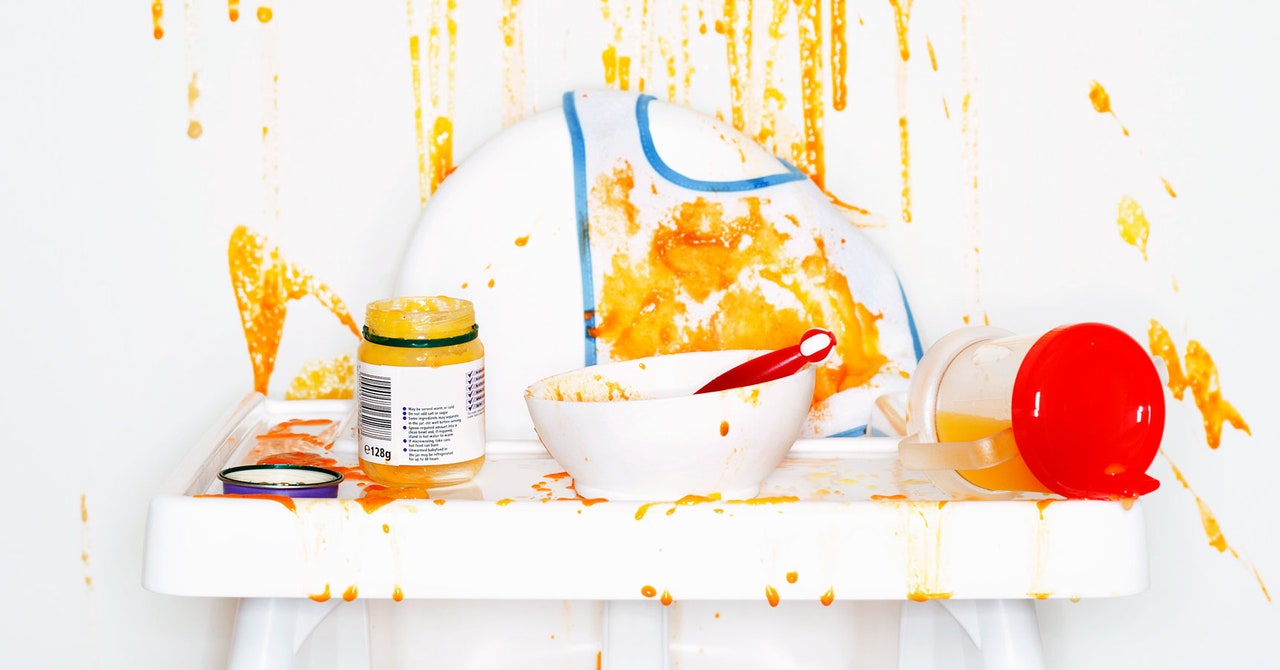
At the start of his third year of graduate school, Kazi Albab Hussain became a father. As a new dad and a PhD student studying environmental nanotechnology, plastic was on his mind. The year before, scientists had discovered that plastic baby bottles shed millions of particles into formula, which infants end up swallowing (while also sucking on plastic bottle nipples). “At that time,” Hussain says, “I was purchasing many baby foods, and I was seeing that, even in baby foods, there are a lot of plastics.”
Hussain wanted to know how much was being released from the kinds of containers he’d been buying. So he went to the grocery store, picked up some baby food, and brought the empty containers back to his lab at the University of Nebraska—Lincoln. In a study published in June in Environmental Science & Technology, Hussain and his colleagues reported that, when microwaved, these containers released millions of bits of plastic, called microplastics, and even tinier nanoplastics.
Plastics are complex cocktails of long chains of carbon, called polymers, mixed in with chemical additives, small molecules that help mold the polymers into their final shape and imbue them with resistance to oxidation, UV exposure, and other wear and tear. Microwaving delivers a triple whammy: heat, UV irradiation, and hydrolysis, a chemical reaction through which bonds are broken by water molecules. All of these can cause a container to crack and shed tiny bits of itself as microplastics, nanoplastics, and leachates, toxic chemical components of the plastic.
The human health effects of plastic exposure are unclear, but scientists have suspected for years that they aren’t good. First, these particles are sneaky. Once they enter the body they coat themselves with proteins, slipping past the immune system incognito, “like Trojan horses,” says Trinity College Dublin chemistry professor John Boland, who was not involved in this study. Microplastics also collect a complex community of microbes, called the plastisphere, and transport them into the body.
Our kidneys remove waste, placing them on the front lines of exposure to contaminants. They are OK at filtering out the relatively larger microplastics, so we probably excrete a lot of those. But nanoplastics are small enough to slip across cell membranes and “make their way to places they shouldn’t,” Boland says.
“Microplastics are like plastic roughage: They get in, and they get expelled,” he adds. “But it’s quite likely that nanoplastics can be very toxic.”
Once they’ve snuck past the body’s defense systems, “the chemicals used in plastics hack hormones,” says Leonardo Trasand, a professor at the NYU Grossman School of Medicine and the director of the Center for the Investigation of Environmental Hazards. Hormones are signaling molecules underlying basically everything the body does, so these chemicals, called endocrine disruptors, have the potential to mess with everything from metabolism to sexual development and fertility.
“Babies are at greater risk from those contaminants than full-grown people,” Hussain says. So to test how much plastic babies are exposed to, Hussain’s team chose three baby-food containers available at a local grocery store: two polypropylene jars labeled “microwave-safe” according to US Food and Drug Administration regulations, and one reusable food pouch made of an unknown plastic.

